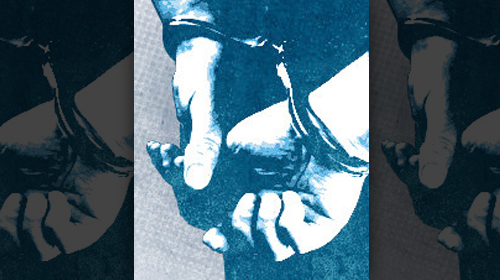Two Frustrated Federal Judges Show Us How to Have a More Fair and Effective Justice System


In 2010, 22-year-old Jamel Dossie served as a middle-man in a series of hand-to-hand crack sales. After three transactions involving a federal informant, Mr. Dossie had handed over – “sold” – a total of 88.1 grams, or 3.1 ounces, of crack. For his part, he earned $140.
Unfortunately for Mr. Dossie, selling more than 28 grams of crack triggers a five-year mandatory minimum sentence. This March, after a short sentencing proceeding in which federal Judge John Gleeson wasn’t allowed to consider Mr. Dossie’s very minor role in the transaction, his remorse for the offense or his personal background, the prosecutor called for a five-year prison sentence, and that was that.
The proceeding didn’t sit well with Judge Gleeson, whose role was more that of observer than participant. In his lengthy opinion, he lamented Mr. Dossie’s sentence and asked the Department of Justice to “refrain from dictating severe mandatory minimum penalties when it cannot prove…that the defendant was the kind of drug dealer for whom those penalties were enacted.” He’s talking about kingpins (for whom the 10-year minimums were written) and middle management (the five-year guys) – not minor players like Mr. Dossie.
Among the various weaknesses of mandatory minimum sentencing, argued Judge Gleeson (as have many other legal experts), is that it prohibits small-time drug offenders like Mr. Dossie from being diverted into more effective alternative programs. For 20 years, Brooklyn’s Drug Treatment Alternative to Prison program has been treating offenders like Mr. Dossie, and graduates of the program are 50 percent less likely to commit another crime than similar offenders who went to prison instead. A better criminal justice system would allow a judge to determine the best way to rehabilitate defendants, instead of mandating a one-size-fits-all punishment.
You can see glimmers of that better justice system in the one we already have. Recently, the Washington Post covered the case of Norma Borgono, a 57-year-old Peruvian immigrant who falsified documents to help her boss to steal $10 million from the U.S. Export-Import Bank. Because so much was stolen, the prosecutor asked for 18 months in federal prison. U.S. District Judge Ricardo Urbina considered the defendant, who hadn’t received anything but her salary for her crime; whose community had written a stack of letters asking for clemency; and whose Latin American culture taught her to obey her male boss. From the Post:
Urbina said it seemed that Borgono had learned her lesson — through sobs, she had tried to apologize at least three times — and had cooperated extensively with authorities. ‘I don’t think you need a whole lot of deterrence, and I can tell this matter has been weighing heavily on you and your family,’ the judge said. ‘In a sense, your punishment has started. In a sense, your rehabilitation has started.’
He sentenced her to a year of home detention, four years of probation and $5,000 in restitution payments.
The trials of Mr. Dossie and Ms. Borgono couldn’t have been more different. Mr. Dossie’s fate was in the hands of a prosecutor wielding a heavy boilerplate sentence. Ms. Borgono’s was in the hands of a judge who was allowed to weigh carefully the factors of her case and mete out a punishment appropriate for her.
The two cases highlight the twin, opposing identities of our justice system, and beg that we choose one of them. Mr. Dossie’s sentence is a blunt instrument meant for punishment. Ms. Borgono’s is a surgeon’s scalpel aimed at fairness and rehabilitation. A punitive justice system, of which mandatory minimums are a part, will satisfy some of us. A fair justice system, of which judicial discretion and rehabilitation is a part, will make all of us safer.
An interesting postscript to the Borgono trial is that it will be one of Judge Urbina’s last. According to the Post, he felt that he “was never given the proper tools to rehabilitate offenders,” and “had simply grown too tired of sentencing” offenders within “guidelines that never truly capture a case’s nuances.” In their own ways, Judge Urbina and Mr. Dossie are both casualties of our inflexible, retributive system. How many more young people and conscientious judges will we lose before we embrace a more fair and rehabilitative model?
Learn more about criminal justice reform: Sign up for breaking news alerts, follow us on Twitter, and like us on Facebook.


